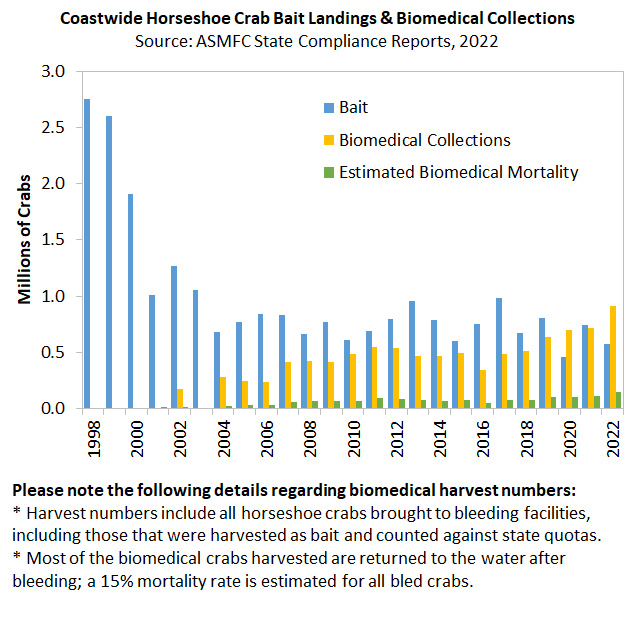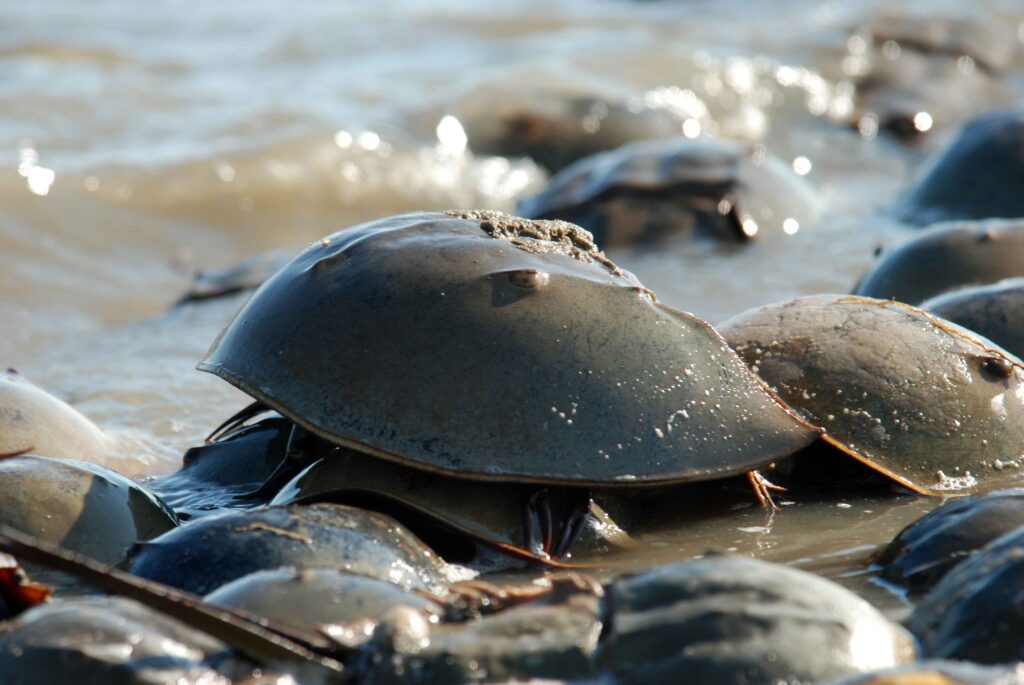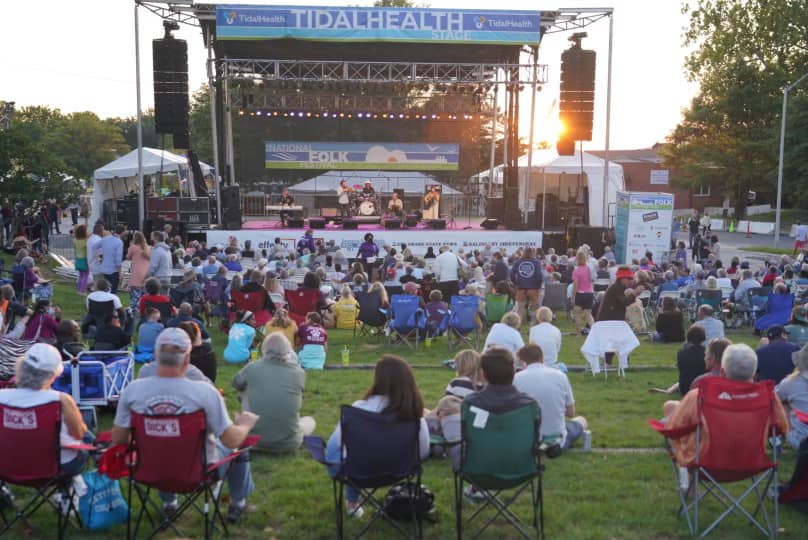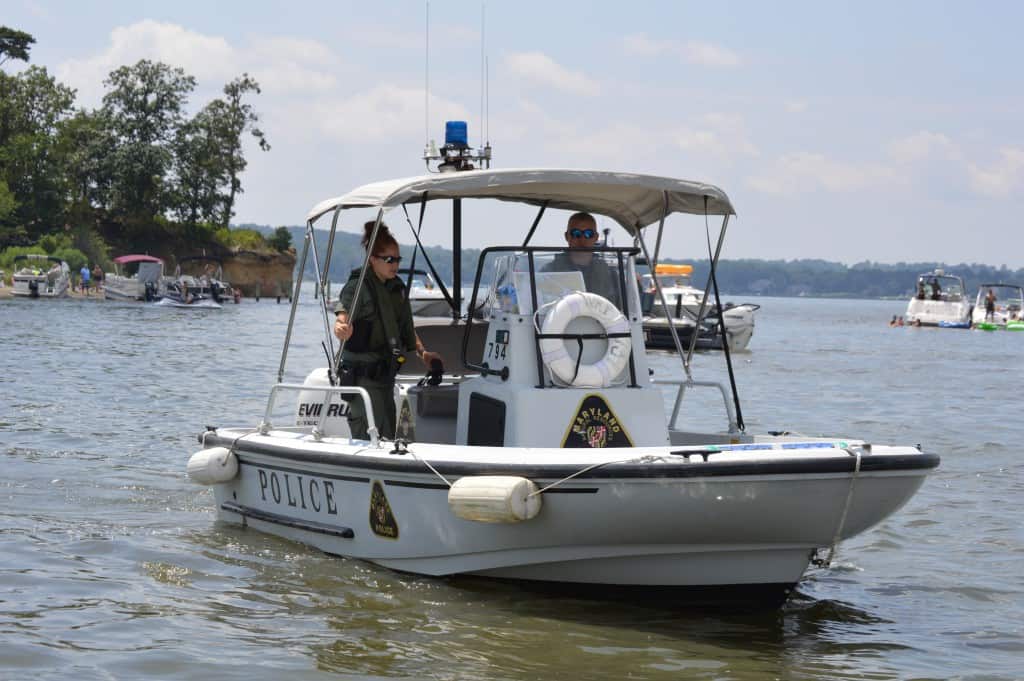June is a peak month for the horseshoe crab’s migration along the East Coast, following the high tides of each new and full moon. The annual movement of these “living fossils” dates back about 350 million years, so it’s believed to be the world’s oldest and largest wildlife migration.
But in a new lawsuit, an endangered species watchdog group says these crabs are in big trouble and the Maryland Department of Natural Resources (DNR) isn’t being transparent about how many are killed each year.
The horseshoe crab is a “valuable commodity to humans,” according to DNR, because its copper-based blood is used for biomedical research. Their blood is used to detect toxins in drugs and medical devices. In 2021, Chesapeake Bay Magazine reported on their key role in developing COVID-19 vaccines, among others.
As DNR explains, the animals are fished for medical use by specially permitted fishing operations. Their blood is drawn in a biomedical facility and they are released back into the water. But environmental groups raise questions about how many of those released horseshoe crabs can survive and thrive.
The Center for Biological Diversity sued DNR under the state’s Public Information Act, claiming the agency has failed to release information detailing the thousands of horseshoe crabs “killed, bled or injured by pharmaceutical companies and fishermen.”
The lawsuit, filed in Anne Arundel County Circuit Court, argues that state-collected records should be publicly available.
“It’s outrageous that a shared treasure like horseshoe crabs can be killed and injured at such high levels and that details of these slaughters are then hidden from the public,” said William Snape, an attorney representing the Center. “We’re wiping out one of the world’s oldest and toughest creatures through indifference and brutality.”
The Center for Biological Diversity cites statistics that horseshoe crab blood harvests have nearly doubled since 2017, with nearly a million crabs harvested for their blood in 2022. They also point to die-offs in Ocean City in 2021, 2022 and 2023.
While they aren’t commenting on the lawsuit, DNR spokesman Gregg Bortz points out that the horseshoe crab fishery is managed coastwide by the Atlantic States Marine Fisheries Commission (ASMFC), to which Maryland and other states provide compliance reports. Biomedical data are included in the state compliance reports, although the data remain confidential to the public at a regional or state level.
ASMFC’s own numbers show that in 2021, 718,809 horseshoe crabs were collected coastwide for biomedical purposes, and the estimated mortality for these crabs was 112,104. This graph shows how many crabs were harvested for bait, for biomedical purposes, and how many of the horseshoe crabs released alive ultimately died.

The Center for Biological Diversity is pushing to have horseshoe crabs recognized under the federal Endangered Species Act, petitioning the U.S. Fish and Wildlife Service earlier this year.
Horseshoe crab spawning is an important piece of the Bay-region food chain. A female horseshoe crab will lay an average of 20,000 eggs in the sand. Not only do they give rise to new horseshoe crabs, those eggs also become a food source for migratory shorebirds, striped bass, Atlantic loggerhead turtles, American eel and flounder.
DNR’s biologists and the Maryland Coastal Bays Program monitor the migrating horseshoe crab population for ecological and scientific research purposes. But the lawsuit claims DNR shouldn’t keep its compliance data to itself.
“Lesson one in saving wildlife is to make all data available to the interested public,” said Snape.
Editor’s Note: You can help a horseshoe crab if you see one struggling. If you come across a horseshoe crab trapped in a rock jetty or flipped upside down on the beach, you can help it by gently flipping or moving the crab using both hands. Never pick it up by its tail. Horseshoe crabs are harmless to humans and do not bite or sting.




